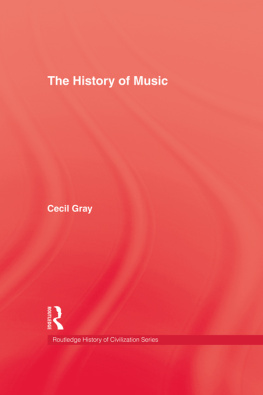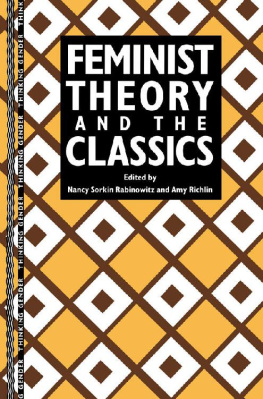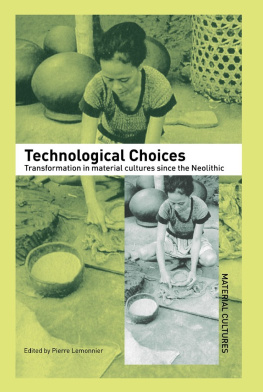Mehrdad Izady - The Kurds: A Concise History And Fact Book
Here you can read online Mehrdad Izady - The Kurds: A Concise History And Fact Book full text of the book (entire story) in english for free. Download pdf and epub, get meaning, cover and reviews about this ebook. year: 1992, publisher: Taylor & Francis, genre: History. Description of the work, (preface) as well as reviews are available. Best literature library LitArk.com created for fans of good reading and offers a wide selection of genres:
Romance novel
Science fiction
Adventure
Detective
Science
History
Home and family
Prose
Art
Politics
Computer
Non-fiction
Religion
Business
Children
Humor
Choose a favorite category and find really read worthwhile books. Enjoy immersion in the world of imagination, feel the emotions of the characters or learn something new for yourself, make an fascinating discovery.
- Book:The Kurds: A Concise History And Fact Book
- Author:
- Publisher:Taylor & Francis
- Genre:
- Year:1992
- Rating:4 / 5
- Favourites:Add to favourites
- Your mark:
- 80
- 1
- 2
- 3
- 4
- 5
The Kurds: A Concise History And Fact Book: summary, description and annotation
We offer to read an annotation, description, summary or preface (depends on what the author of the book "The Kurds: A Concise History And Fact Book" wrote himself). If you haven't found the necessary information about the book — write in the comments, we will try to find it.
The Kurds: A Concise History And Fact Book — read online for free the complete book (whole text) full work
Below is the text of the book, divided by pages. System saving the place of the last page read, allows you to conveniently read the book "The Kurds: A Concise History And Fact Book" online for free, without having to search again every time where you left off. Put a bookmark, and you can go to the page where you finished reading at any time.
Font size:
Interval:
Bookmark:

THE KURDS
THE KURDS: A CONCISE HANDBOOK
Mehrdad R. Izady
Department of Near Eastern Languages and Civilizations Harvard University

First published 1992 by Taylor & Francis
Published 2015 by Routledge
2 Park Square, Milton Park, Abingdon, Oxon OX14 4RN
711 Third Avenue, New York, NY, 10017, USA
Routledge is an imprint of the Taylor & Francis Group, an informa business
THE KURDS: A Concise Handbook
Copyright 1992 Taylor & Francis. All rights reserved.
Except as permitted under the United States Copyright Act of 1976, no part of this publication may be reproduced or distributed in any form or by any means, or stored in a database or retrieval system, without the prior written permission of the publisher.
Interior design by Designers Workshop. Cover design by Michelle Fleitz.
A CIP catalog record for this book is available from the British Library.
Library of Congress Cataloging-in-Publication Data
Izady, Mehrdad
The Kurds : a concise handbook / Mehrdad Izady
Includes bibliographical references.
1. KurdsHandbooks, manuals, etc. 2. Middle EastEthnic relations. I. Title.
DS59.K86I93 1992
956'.0049159dc20
92-8174
CIP
ISBN 13: 978-0-844-81729-3 (hbk)
ISBN 13: 978-0-844-81727-9 (pbk)
Publishers Note
The publisher has gone to great lengths to ensure the quality of this reprint but points out that some imperfections in the original may be apparent.
CONTENTS
Modern: 19191959
Festivals, Ceremonies, & Calendar
1. Kurdish Demographic Trends, 600 BC to AD 1900
Since before the dawn of recorded history the mountainous lands of the northern Middle East have been home to a distinct people whose cultural tradition is one of the most authentic and original in the world. Some vestiges of Kurdish life and culture can actually be traced back to burial rituals practiced over 50,000 years ago by people inhabiting the Shanidar Caves near Arbil in central Kurdistan.
Despite their antiquity and cultural vitality there are very few reference works on the Kurds today. A major reason for such a gap is that the Kurds have lacked the organized apparatus of a sovereign state, which allowed Turkey, Syria, Iraq, and Iran to produce symbolic scholarly justifications of their distinct collective national identities in the eyes of outsiders. These works in turn engendered the binding glue of pride to help create nations from the disparate elements found within their boundaries when they were created.
In the same stroke, these very same nation-states have attempted to stop the growth of the Kurdish people as a distinct and separate national entity. Often they have tried to do away with them altogether.
They have glossed over the Kurdish past, denying the originality of this ancient culture, and preventing original research on any topic of national importance to ethnic Kurds. They have created and foisted false identities onto the Kurdssuch as the labels Mountain Turk in Turkey, and Umayyad Arab in Syria and Iraq for the Yezidi Kurds. They have simply denied the Kurds separate ethnic existence in Iran, Soviet Azerbaijan, and Turkmenistan. In doing this these modern nation-states have done plenty to confuse even the Kurds themselves.
It is an astonishing fact, if not an outright embarrassment, that not a single archaeological object has ever been identified as Kurdish in any museum anywhere in the worldnot even a broken arrowhead, a pottery shard, or a piece of mosaic. This omission is made more glaring by the fact that every other ethnographic grouping of people, including the stone-age cultures of pre-Columbian North America, Australia, the Pacific islands, and Africa, has had historical artifacts identified for it in museums.
Except for rugs, and (very recently) paintings, the same omissive treatment continues for modern specimens of Kurdish artistic creation as well. Despite the Kurdish origin of over three-quarters of the hand-made rugs and kilims produced in contemporary Turkey, no specimen is actually identified as Kurdish within the boundaries of that state.
In this work I have tried to identify and delineate the heritage of the Kurds, now thoroughly submerged in the accepted and standard models for subdividing Middle Eastern civilization, none of which is designed to accommodate the stateless Kurds.
As to who is a Kurd and who is not, this work respects the claim of anyone who calls himself a Kurd, regardless of the dialect he speaks, religion he practices, or state where he lives. As to who was a Kurd, I treat as Kurdish every community that has ever inhabited the territory of Kurdistan and has not acquired a separate identity to this day, or been unequivocally connected with another identifiable nation the bulk of which is or was living outside the territories of Kurdistan. This is consistent with what is accepted by consensus for the identification of ancient Egyptians or Greeks and the relationship they have to modern Egyptians and Greeks.
By the same certainty that we accept the inhabitants of pharaonic Egypt as the unquestionable forbearers of the modern Egyptians, despite the fact that they spoke a different language, practiced a different religion, and had different racial characteristics, the ancient inhabitants of Kurdistan ought to be equally treated as the forbearers of the modern ones. This topic is elucidated in the section on National Identity.
This book is meant to serve as a reference manual to provide a reasonably brief but documented insight into matters Kurdish, beginning always with their historical background and, if relevant, geographical setting. Only the main points and the major causes and effects are discussed here. As one might expect, no people can be described fairly in the space of a single volume. But even the most basic knowledge of the Kurds is scanty. Not even now, at the end of the second millennium and in the age of space travel, is anyone sure how many Kurds there are. It is hoped this book will be a useful contribution and basis for further research.
This work is targeted at the widest possible audience: the public, the press, teachers, students, scholars, and even travelers. It is a source to check ones data quickly or simply provide oneself for the first time with an understanding of the people and land of Kurdistan.
A more complete reference/textbook, A Basic Study of the Land and People of Kurdistan, is under preparation by this author. It is hoped that it will provide readers with a far more detailed view of the Kurds, their land, history, and culture. A companion Atlas of the Kurds is also under preparation.
While the final editorial revisions of this work were underway, the Soviet Union, the last of the great European empires, joined history. Since it will be long before a stable alternative state takes hold in the former Soviet territories, the name Soviet Union and the adjective Soviet are used in this work for what they represented before the recent changes.
Cambridge
December 1991
The bibliographies and suggested further readings given after each entry in this work include those sources used in its preparation as well as other sources of value. It is crucial to note, however, that these are by no means only those works that agree with the ideas or support the views entertained in this handbook. On the contrary, in view of the relative infancy of the field of Kurdish studies, many of these sources hold positions, even on fundamental issues, at variance with those presented here, and as often with each other. Some authors cited have also reversed their own earlier stands in later works. On the important issue of the origins of the modern Kurdish language, the linguist David N. MacKenzie, for example, wrote in 1961 of connections he saw with the Median language, only to reverse himself in a mere footnote in 1989 (in Peter A. Andrews, ed.,
Next pageFont size:
Interval:
Bookmark:
Similar books «The Kurds: A Concise History And Fact Book»
Look at similar books to The Kurds: A Concise History And Fact Book. We have selected literature similar in name and meaning in the hope of providing readers with more options to find new, interesting, not yet read works.
Discussion, reviews of the book The Kurds: A Concise History And Fact Book and just readers' own opinions. Leave your comments, write what you think about the work, its meaning or the main characters. Specify what exactly you liked and what you didn't like, and why you think so.






